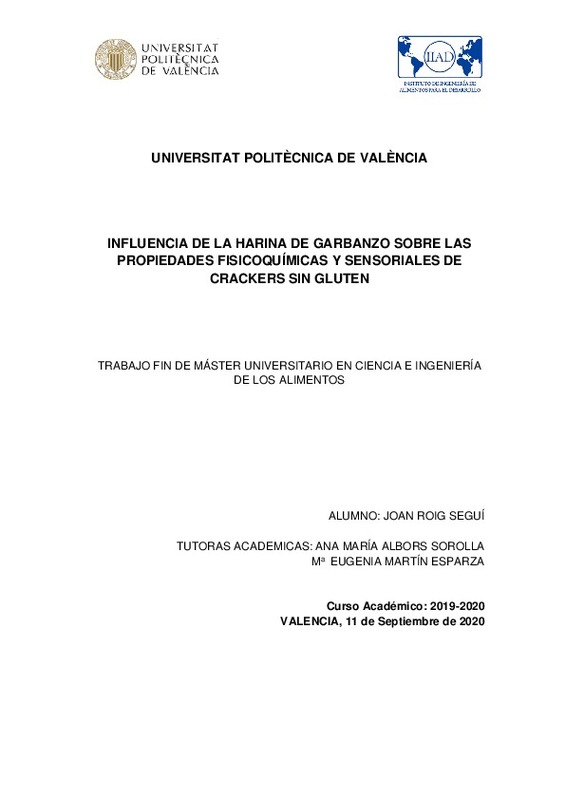JavaScript is disabled for your browser. Some features of this site may not work without it.
Buscar en RiuNet
Listar
Mi cuenta
Estadísticas
Ayuda RiuNet
Admin. UPV
Influencia de la harina de garbanzo sobre las propiedades fisicoquímicas y sensoriales de crackers sin gluten
Mostrar el registro completo del ítem
Roig Seguí, J. (2020). Influencia de la harina de garbanzo sobre las propiedades fisicoquímicas y sensoriales de crackers sin gluten. http://hdl.handle.net/10251/151467
Por favor, use este identificador para citar o enlazar este ítem: http://hdl.handle.net/10251/151467
Ficheros en el ítem
Metadatos del ítem
| Título: | Influencia de la harina de garbanzo sobre las propiedades fisicoquímicas y sensoriales de crackers sin gluten | |||
| Autor: | Roig Seguí, Joan | |||
| Director(es): | ||||
| Entidad UPV: |
|
|||
| Fecha acto/lectura: |
|
|||
| Resumen: |
[ES] En el presente trabajo se ha realizado una evaluación de la influencia de diferentes concentraciones de harina de garbanzo en la elaboración crackers sin gluten sobre sus propiedades fisicoquímicas y sensoriales. En ...[+]
[EN] In the present work, an evaluation of the influence of different concentrations of chickpea flour on gluten-free crackers and the physicochemical and sensory characterization of these have been carried ...[+]
|
|||
| Palabras clave: |
|
|||
| Derechos de uso: | Reconocimiento - No comercial - Sin obra derivada (by-nc-nd) | |||
| Editorial: |
|
|||
| Titulación: |
|
|||
| Tipo: |
|
recommendations
Este ítem aparece en la(s) siguiente(s) colección(ones)
-
ETSIAMN - Trabajos académicos [3541]
Escuela Técnica Superior de Ingeniería Agronómica y del Medio Natural







